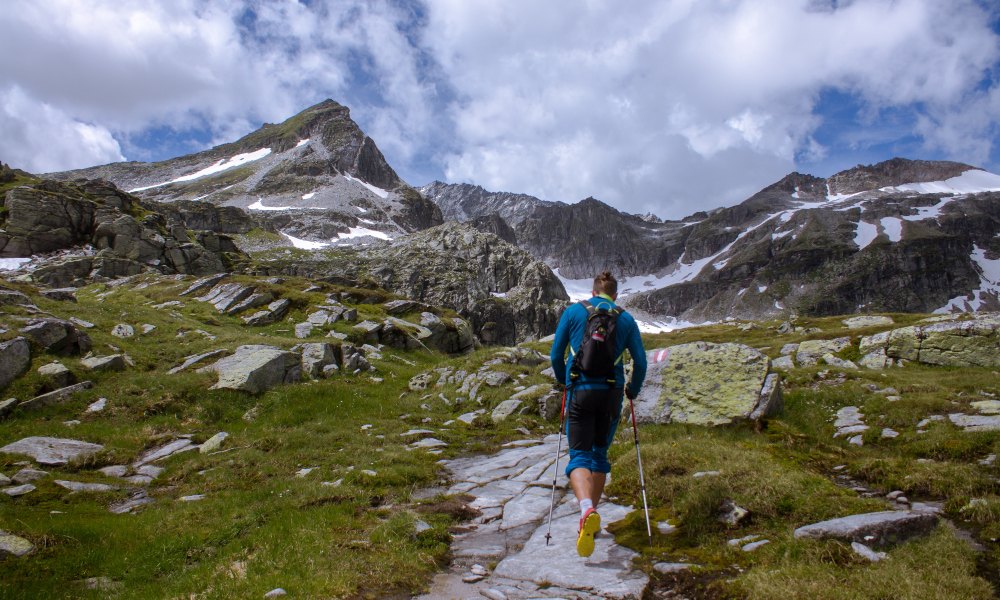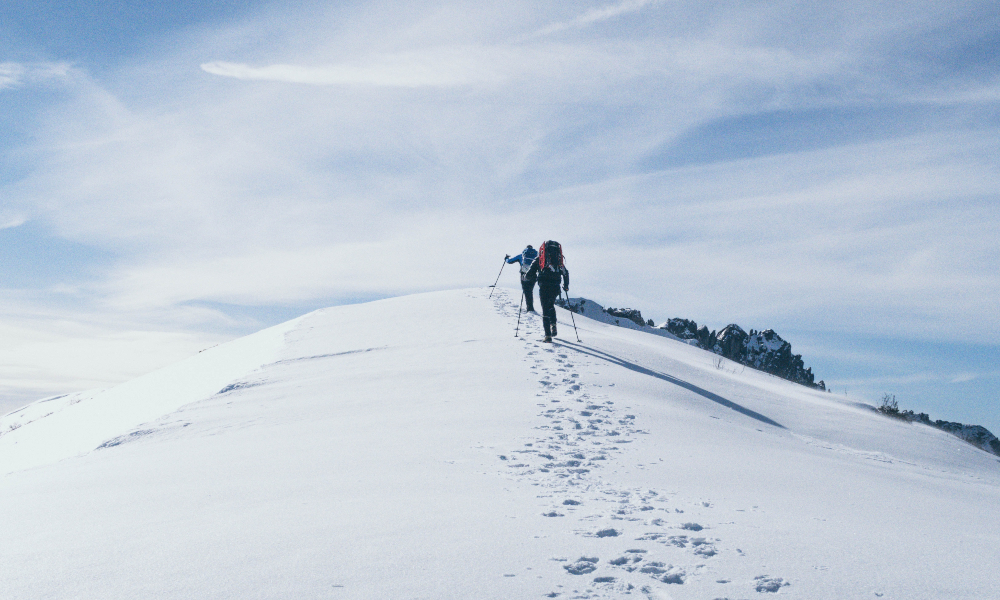Becoming confident at navigating with a map in the mountains doesn’t happen overnight. You can’t read a book and develop the skills. They need practice in the field, in a variety of terrain and conditions. Then the theory becomes grounded in experience.
“Good navigation skills are a big booster for self-confidence,” says Suunto’s resident navigation pro, Terho Lahtinen. “When you know you’ll find your way back, it gives you the freedom to explore new surroundings without any fear of getting lost. That is pretty nice whenever you come to a new place.”

Photo by Jan-Niclas Aberle on Unsplash
Expand your horizons
This is the fifth and final article in our series on mountain navigation. In this one, we review the previous four articles, touch on the key takeaways from each of them, and bring them all together in one place so they are easy to review. It’s worth going through each of them a couple of times so it all sinks in.
“Wayfinding and map reading are absolutely useful for anyone regardless of age,” Terho says. “It’s a great way to develop three-dimensional thinking, foster curiosity, and to encourage the spirit of exploration!”
Learn the basics
In the first article, Terho explains how to get started. Developing good location awareness and topographical map reading ability go hand in hand. Each supports the other. You really need to cement these skills before leading trips into big, unfamiliar mountain terrain.
To become a confident wayfinder you need to fall in love with topo maps. Buy maps that illustrate outdoor recreation areas you know well and study them carefully. Investigate how land formations are depicted. Get a feeling for contour lines and how they communicate inclination. Take your map outdoors and compare what it tells you with the landscape you see around you. Doing this over time helps to develop location awareness.
“Map reading skills are the number one thing to learn,” Terho says. “Maps tell us how the world around us looks. If you know how to read one and correlate the information with the terrain, you can get wherever you want.”
Read how to find your way in the mountains.

Photo by Fabrizio Conti on Unsplash
Planning a trip
To plan a safe and challenging trip in the backcountry you need to have developed your map reading skills, location awareness and general outdoor experience. Otherwise your planning won’t be based on anything solid. Good planning is important to ensure your trip is a success.
This is why in the second article Terho recommends people new to map reading first plan a trip somewhere familiar. This will allow you to relax and to compare what you have seen before with what you see on the map. It makes recognition easier.
Once you have selected a destination, study the terrain features on the map. Look at potential start and end points, possible points of interest, handrails, the contour lines, and consider what is realistic for your group. Review this second article above for pacing information and factoring in break times.
Read 7 tips to plan a route in the mountains.
Staying on track
The planning is done, and now you have parked your car at the roadend and are heading out into the mountains. This third article is about how to stay on track when you’re out there.
Two things are particularly important now. Firstly, keep a schedule outlining what landmark or terrain feature you will reach and when, and monitor your travel time. Secondly, use handrails and landmarks to guide you.
Look at your map before you start each leg of your trip and try to memorize the upcoming terrain features.
Read our 9 tips for staying on track in the mountains.
Challenging conditions
The best laid plans can go awry. And that’s partly what makes us love adventure, right? If it was always easy and straightforward it would also be boring. Adversity helps us to find our inner strength. This is why we have always been drawn to adventure.
In this fourth article, we look at how to handle challenging conditions, specifically poor visibility. This is when following handrails, being flexible with your plan, and having supplementary technology, like a GPS device, makes all the difference.
Read 9 rules to follow when your trip in the mountain goes pear shape.
Practice makes perfect
As with any skills, practice makes perfect. “Reaching a master level is often a process of years,” Terho says. “But if you study maps regularly at home and every now and then spend a few hours practicing in the outdoors, you will make good progress in months. It’s something you try out once a year, you’ll start from scratch every time.”
Lead images:
Photo by Tim Tiedemann on Unsplash
Photo by Toomas Tartes on Unsplash
Read more articles
How to find your way in the mountains
7 tips to plan a route in the mountains
A veteran navigator's 9 tips for staying on track in the mountains
9 rules to follow when your trip in the mountains goes pear-shaped